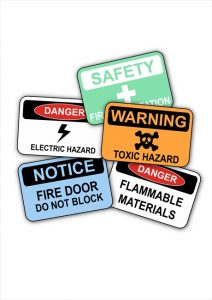
Carpenter and apprentice
New Zealand’s track record on workplace fatalities makes for concerning reading. Here in NZ, you’re 6.5 times more likely to be killed at work than in the United Kingdom. The cost of total harm in 2024 in New Zealand was 5.4 billion.
The Health and Safety at Work (2015) Act is clear when it comes to ensuring our New Zealand workforce comes home safely, however the numbers are not moving in the right direction.
Under the Act, businesses have to engage workers on health and safety and encourage their participation on health and safety matters. It’s no longer enough to say ‘oh, we told them that at a meeting’ or ‘ there are posters on the wall about that’. “This is not just about compliance, it’s about getting people home healthy and safe; it’s not just good for business, it’s the right thing to do,” says, Worksafe, the government body charged with creating a step change in health and safety culture in this country.
The question in relation to workplace communication is: how do you engage staff and encourage them to participate in health and safety matters when there is a gap in understanding H & S materials? Workplace documentation around health and safety extends to policy and procedure right through to health and safety signage, hazard identification boards and near miss forms. Add to that the completion of an incident report, reading the staff newsletter on H & S, or the minutes from the latest HSR meeting and you have a large amount of reading for workers to comprehend, and written paperwork to complete. As a recent Canadian report points out, health and safety is dependent on all this material being understood; and clear communication is at the heart of creating a positive workplace safety culture.

So how can you make sure that your message is being understood by all employees, including those with low literacy or English as a Second Language?
- Know your audience when it comes to H & S training. Have they just come off a long night shift? Are they unused to sitting still for long periods? Do they all have English as a first language? Considering these types of questions will help you to plan your training session. This also applies to any written information about health and safety – posters, policy, signage –write in plain English and keep materials as visual as possible.
- Think about getting your message across visually – what will your group respond to? True stories and anecdotes, visuals, and learning by doing are all learning techniques which can be effective
- Run an assertiveness workshop to train staff and build confidence to speak out about health and safety, whether this is calling out unsafe behaviour or being confident enough to bring ideas forward at a meeting.

- Make sure the key language around H & S has been clearly understood. Often the vocabulary connected to this topic will crop up in material and training sessions again and again so it’s worth taking the time to ensure all staff have understood the relevant words and what they mean. Staff can create a glossary or picture dictionary to use with speakers of other languages, or words can be translated into different languages.
- Explain the purpose behind form filling and other documentation relating to health and safety. Where does the information go? Why is it important? What happens to the data collected from these forms?
- Also, commit to communicating back to your teams about feedback they have given you. It’s demotivating when staff take the time to report issues but then never hear anything more about the matter.
When it comes to health and safety, what you don’t know can harm you. Making sure workers understand the important health and safety messages around your workplace is one step towards a safer workplace for all.






